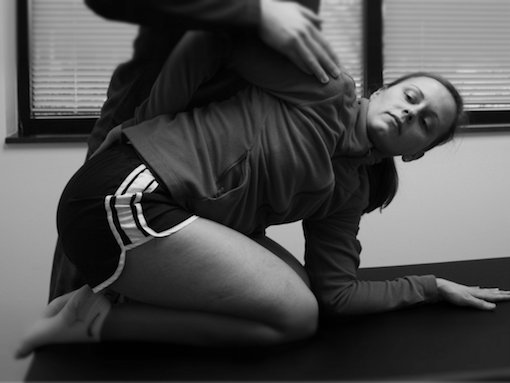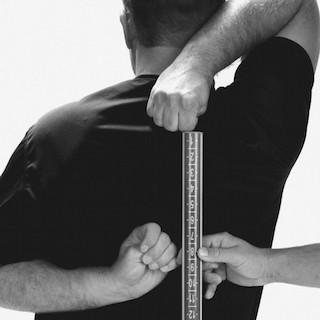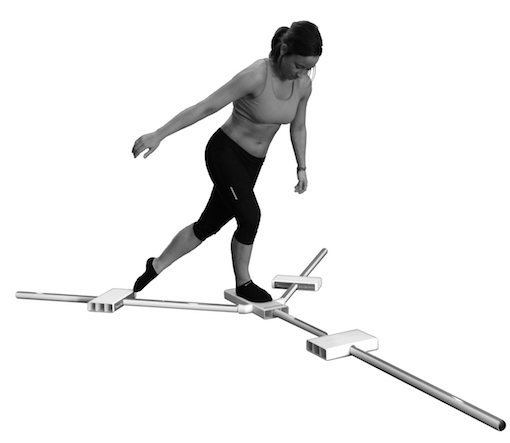
How Do You Tell If Your Rehab Is Complete?
Getting over an injury or surgery is hard enough.
But the real agony many times can be the anticipation…
When can you run again? When can you work out again? When can you play?!
When you love a sport or activity — or just love being active — it can eat away at you to “take time off”.
Even worse, though, can be the “what if’s”…
What if you’re not ready? What if the pain creeps back? What if you just re-injure yourself?
I have to assume that you won’t be satisfied with just getting back. Don’t you want to kick some butt? Can you fully enjoy yourself AND function at a high level if you’re worrying about “what if”?
When Is Rehab Over?
So once pain has gone away…how do you KNOW if you’re ready to return to your active (and at times aggressive) lifestyle?
Not to scare you, but did you know that the common measuring stick with most doctors and therapists is simply time?
“It’s been 12 weeks…you should be ready so I’ll release you back to full activities.”
I here it so often. And you know what…it flat out stinks!!!
Just because time has passed does NOT mean everything’s magically “all right”.
Sure we can expect average time frames for rehabilitation…but don’t you want to know for sure?

The goal is to identify the both the limitations still at play at your initial area of concern (for example, function of the knee following surgery) AND how your body moves as a whole.
Why should you care about anything except the injured area? Simple…your body’s movement center is a complex system that’s designed to adapt.
So put a barrier (pain!!!) in the path of your movement center completing your brain’s desired task (squat, run, jump…and anything else) and it’ll adapt to get the job done.
And just because that barrier (pain) is removed does NOT mean that your movement center has gone back to “normal”.
In fact, your new “normal” may be that pattern of adjustment you were using when the pain was still around.
So don’t you want to check to make sure your body is moving the way it’s supposed to?
Objective Measurements To Give You Peace Of Mind
I like to use 3 different methods of assessment to ensure that we haven’t left any significant “adaptations” unchanged.
These methods go beyond simple range of motion or strength tests.
They reveal how your neuromuscular system (aka, your movement center) is patterning movement, which requires control and production of movement across multiple areas of the body.
Here’s the tests…
Selective Functional Movement Assessment (SFMA)
The SFMA is used when pain is present, so it’s used mostly with Physical Therapy services. But I also use it with Movement Analysis (performance-based) services and Sports Readiness Testing services to provide more clarity of what is occurring in the body.
It starts with a quick assessment of seven basic movements we should all be able to do — regardless of sport or age.

Based on your performance or the presence of pain, the SFMA has a process to break down the movement to identify if it’s truly an inability of your body to allow movement (mobility restriction) or an inability to control movement (stability restriction).
Functional Movement Screen (FMS)
The FMS is a good first step when screening for movement quality when pain isn’t part of everyday life.
It’s the first part of the Sports Readiness Testing service to identify a person’s risk of injury with conditioning and sports activities.
The FMS is also used within the Movement Analysis service to help guide a fitness / strength program, as well as within Physical Therapy services to prepare for expected discharge.

The FMS is also used within the Movement Analysis service to help guide a fitness / strength program, as well as within Physical Therapy services to prepare for expected discharge.
The FMS answers important questions to help ensure you reach your goals and excel in the activities most important to you:
• Is pain present in your basic functional patterns of motion?
• Are you at an elevated risk for future injury?
• How can you reinforce your foundation of movement and improve physical performance?
Y-Balance Test
The Y-Balance Test is divided into an assessment of Upper Body and Lower Body control when in contact with the ground.
They can be performed separately, but because of the influence of the core (hips, pelvis, spine, ribs, and shoulder blades) and regional interdependence I feel the information from both Upper Body and Lower Body portions is necessary in most situations.
Information obtained from this test is critical for athletes at any level preparing to return to their sport after a leg, arm or back injury (ex: ACL reconstruction, sprained ankle, SLAP repair, shoulder impingement, spondylolisthesis, etc.).
The Y-Balance Test is used in conjunction with the FMS in many cases.
It makes up the second part of the Sports Readiness Testing service, is often used within the Movement Analysis service, and helps provide for discharge planning within the Physical Therapy service.

Better Safe Than Sorry
Today’s world of rehab is heavily influenced by money. Your health insurance has limits on what it will pay (and that affects your pocket AND your therapy company’s pocket). It’s silly to think that your rehab hasn’t been influenced in some way by your insurance benefits.
Then there’s the issue of the quality and attention you received during rehab. If your therapist was busy managing other patients at the same time as you, can you guarantee that all your needs were accounted for?
And your last line of defense is your doctor. Unfortunately, I hear reports of “all he did was ask how I felt” much more often than I hear “he gave me a thorough exam before he gave me the green light to return”.
You’ve put a lot of hard work, energy, and time into your rehab, please don’t skip the critical step of ensuring you’re ready for “full speed”!
Does this info bring up some questions that you’d like to discuss? Or do you have general questions about what might still be going on with your body?
I’m happy to schedule you for a 100% free 30-minute Discovery Visit so you can get your questions answered.
The Discovery Visit is simply a chance for you to make sure you’re confident about the path I suggest before you make any financial investment with me…no risk on your part!
In your Discovery Visit, you’ll tell me about your issues and concerns, I’ll ask you additional detailed questions, and then I’ll put you through an assessment. Once I have the necessary information, I’ll be able to let you know…
What I see going on in your body…
How I would suggest correcting the problem…
How long I would expect it to take for you to meet your goals…
And answer your specific questions as best as possible.
Please understand that no treatment will be provided at the Discovery Visit. This is a session designed for you to get information.
It’s an easy first step…There’s no need to call your doctor for a prescription…No need to check with your insurance first…And no obligation to schedule treatment with me…
The Discovery Visit truly is a risk-free opportunity for you to be able to make an informed decision about what’s best for you! Click the orange button above to get started on the right path!!!
Could you be the next Success Story?
(These people were all in your shoes once…)
“To think that at one time I was lying flat on my back on a tennis court in excruciating pain; through my journey with Modern Athlete PT I am pain free, stronger, faster, have better balance, and have more confidence in my body than I did before my back injury. I’m back on the tennis court, thanks entirely to Todd.”
“My initial meeting with him was one of the most comprehensive assessments I’ve ever done. I have had 3 ACL tears and 2 separate meniscus tears since 2007. Todd was able to pinpoint some mobility and movement problems I had immediately. I was finally able to find the direction I’ve been looking for to start improving myself. While I know these things are never an easy fix, I was encouraged when I started seeing results in my lifts and in my general movement.”
